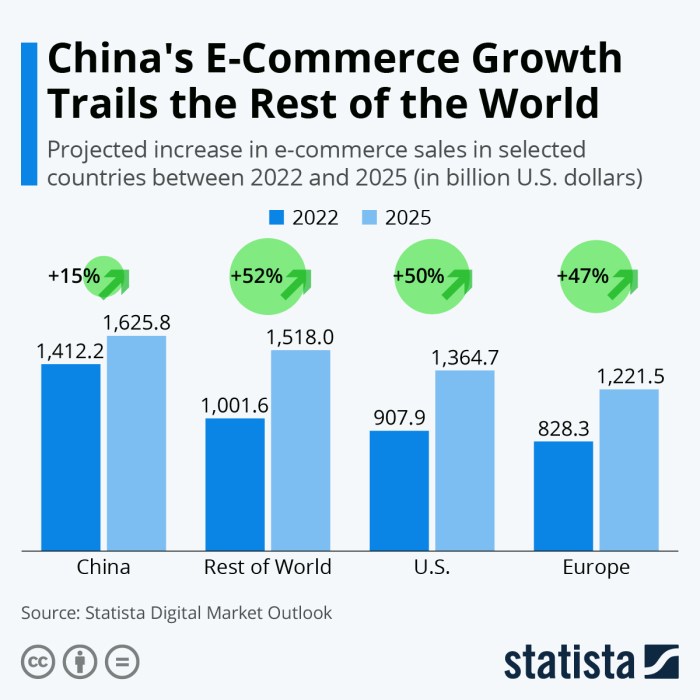Retail consumer e-commerce is growing at single-digit rates, signaling a transformative era for the industry. This growth trajectory presents both opportunities and challenges for retailers, consumers, and the overall e-commerce landscape.
Factors contributing to this growth include the rise of mobile shopping, social commerce, and the evolving shopping habits of consumers in the digital age. Retailers must adapt to these changes by meeting the demands of e-commerce consumers while navigating a competitive landscape.
Market Trends

The single-digit growth rate of e-commerce can be attributed to several factors, including market saturation, increasing competition, and the rise of alternative shopping channels such as social media and brick-and-mortar stores. Despite the overall slowdown, certain industries and product categories continue to experience strong e-commerce growth, such as electronics, fashion, and home goods.
Emerging Technologies
Emerging technologies such as mobile shopping and social commerce are significantly impacting e-commerce growth. Mobile shopping is becoming increasingly popular, as consumers can now conveniently make purchases from their smartphones and tablets. Social commerce platforms allow consumers to discover and purchase products directly from social media channels, further blurring the lines between social interaction and shopping.
Consumer Behavior
Retail consumers in the digital age are increasingly shifting towards online shopping for convenience, variety, and lower prices. They are also becoming more demanding, expecting personalized shopping experiences and seamless omnichannel integration. Retailers face challenges in meeting these evolving demands, requiring them to adopt innovative strategies and technologies.
Challenges and Opportunities
- Meeting the demand for personalized shopping experiences
- Integrating online and offline channels seamlessly
- Leveraging data analytics to understand consumer behavior
Competitive Landscape

The retail e-commerce industry is highly competitive, with major players such as Amazon, Walmart, and Alibaba holding significant market shares. Successful e-commerce retailers often differentiate themselves through innovative business models, such as subscription services, marketplace platforms, and omnichannel retailing.
Competitive Threats
- New entrants offering disruptive technologies and business models
- Established brick-and-mortar retailers expanding their e-commerce presence
- The rise of social commerce platforms
Future Outlook: Retail Consumer E-commerce Is Growing At Single-digit Rates

Retail e-commerce is expected to continue growing, albeit at a slower pace than in previous years. Emerging trends such as personalized shopping, omnichannel retailing, and artificial intelligence will shape the future of the industry. Retailers that embrace these trends and adapt to the evolving consumer landscape will be well-positioned to capitalize on the continued growth of e-commerce.
Opportunities for Retailers, Retail consumer e-commerce is growing at single-digit rates
- Investing in personalized shopping technologies
- Developing seamless omnichannel strategies
- Leveraging data analytics to gain insights into consumer behavior
- Exploring new business models, such as subscription services and marketplace platforms
Essential FAQs
What are the factors driving the single-digit growth rate of e-commerce?
Factors include the rise of mobile shopping, social commerce, and evolving consumer shopping habits.
How are consumer shopping habits changing in the digital age?
Consumers are increasingly shopping online due to convenience, wider product selection, and competitive pricing.
What are the challenges facing retailers in meeting the demands of e-commerce consumers?
Retailers face challenges in providing seamless omnichannel experiences, managing inventory effectively, and ensuring fast and reliable delivery.